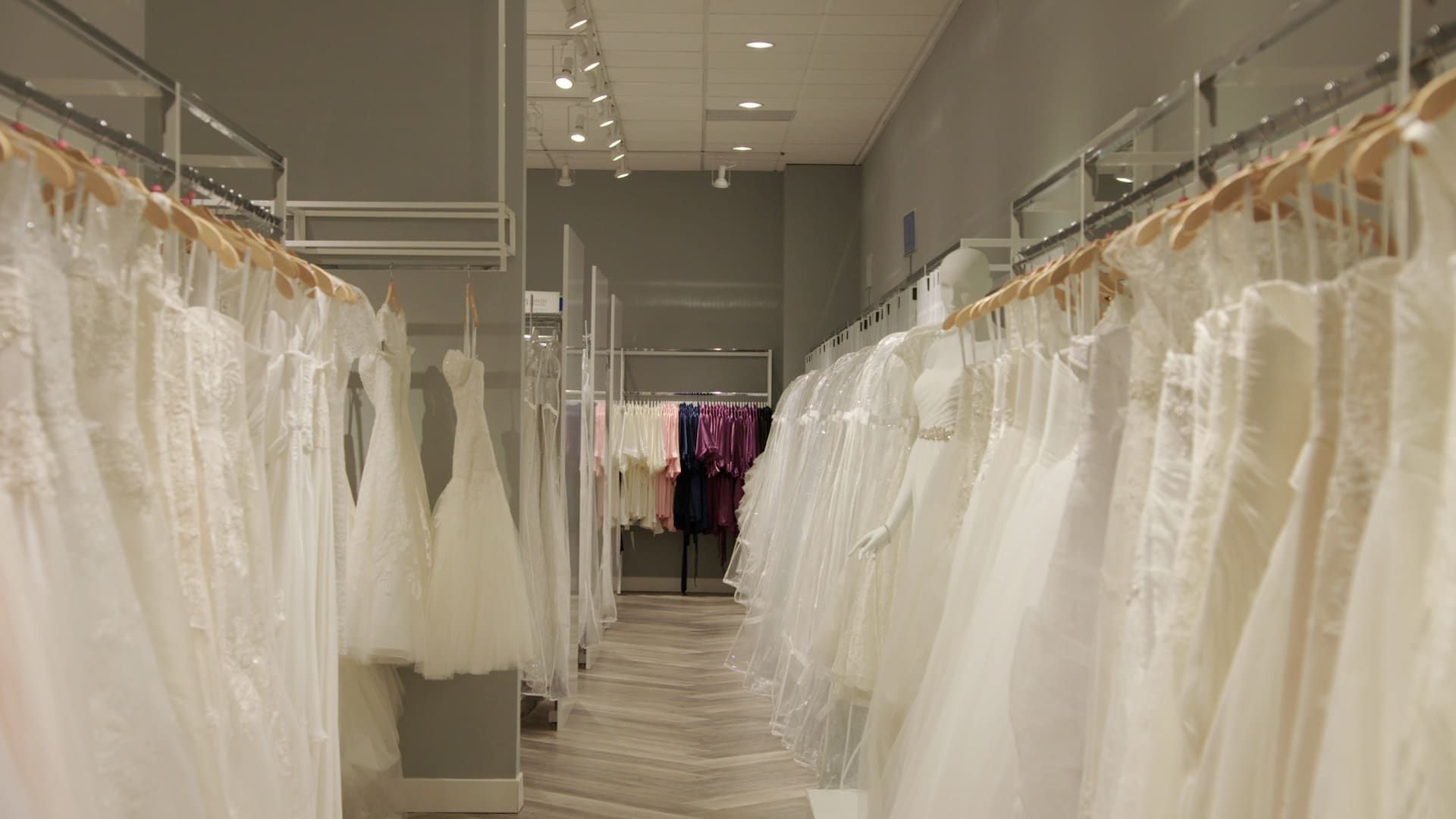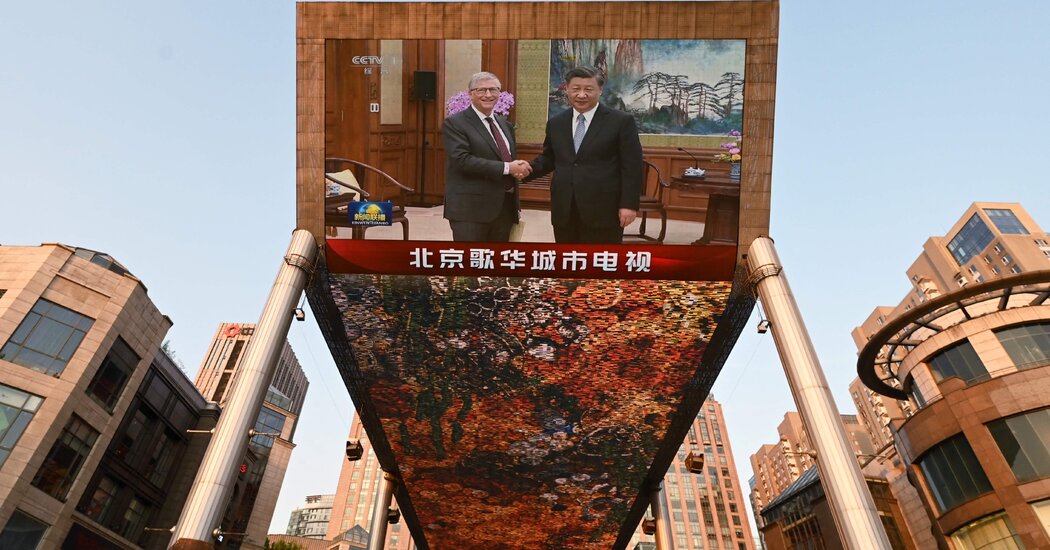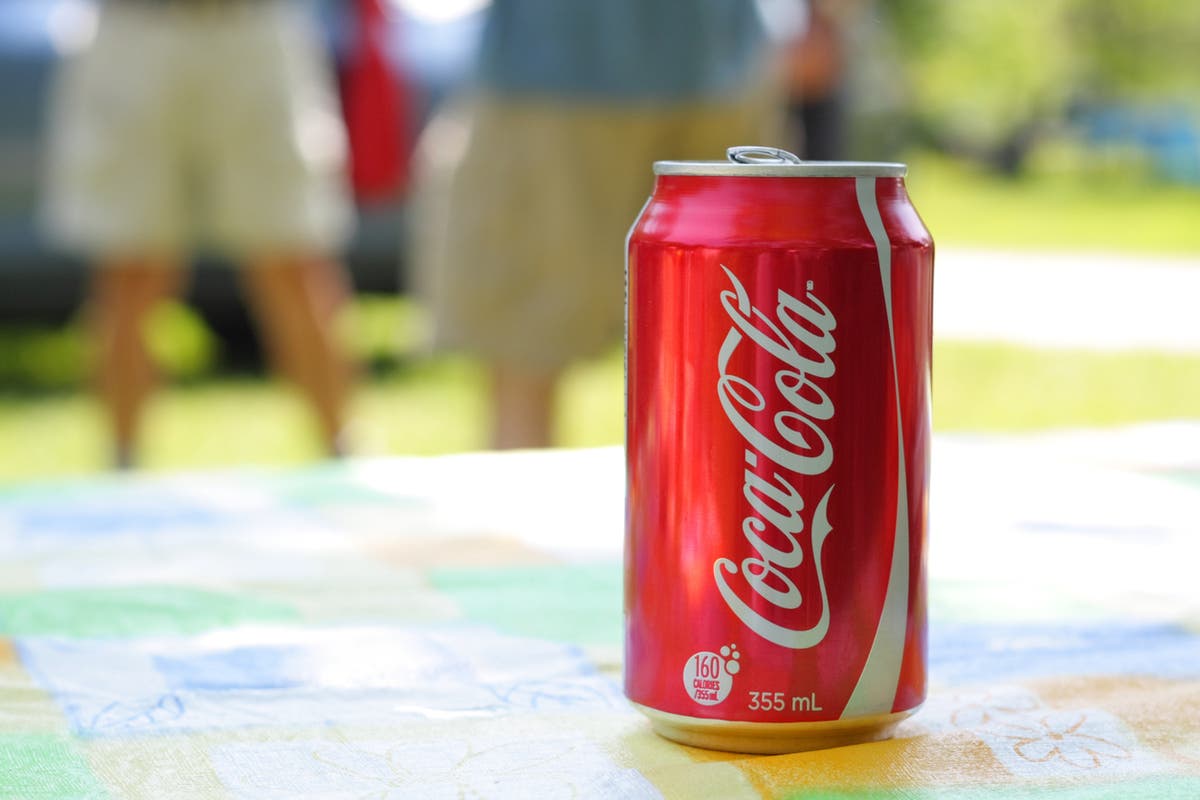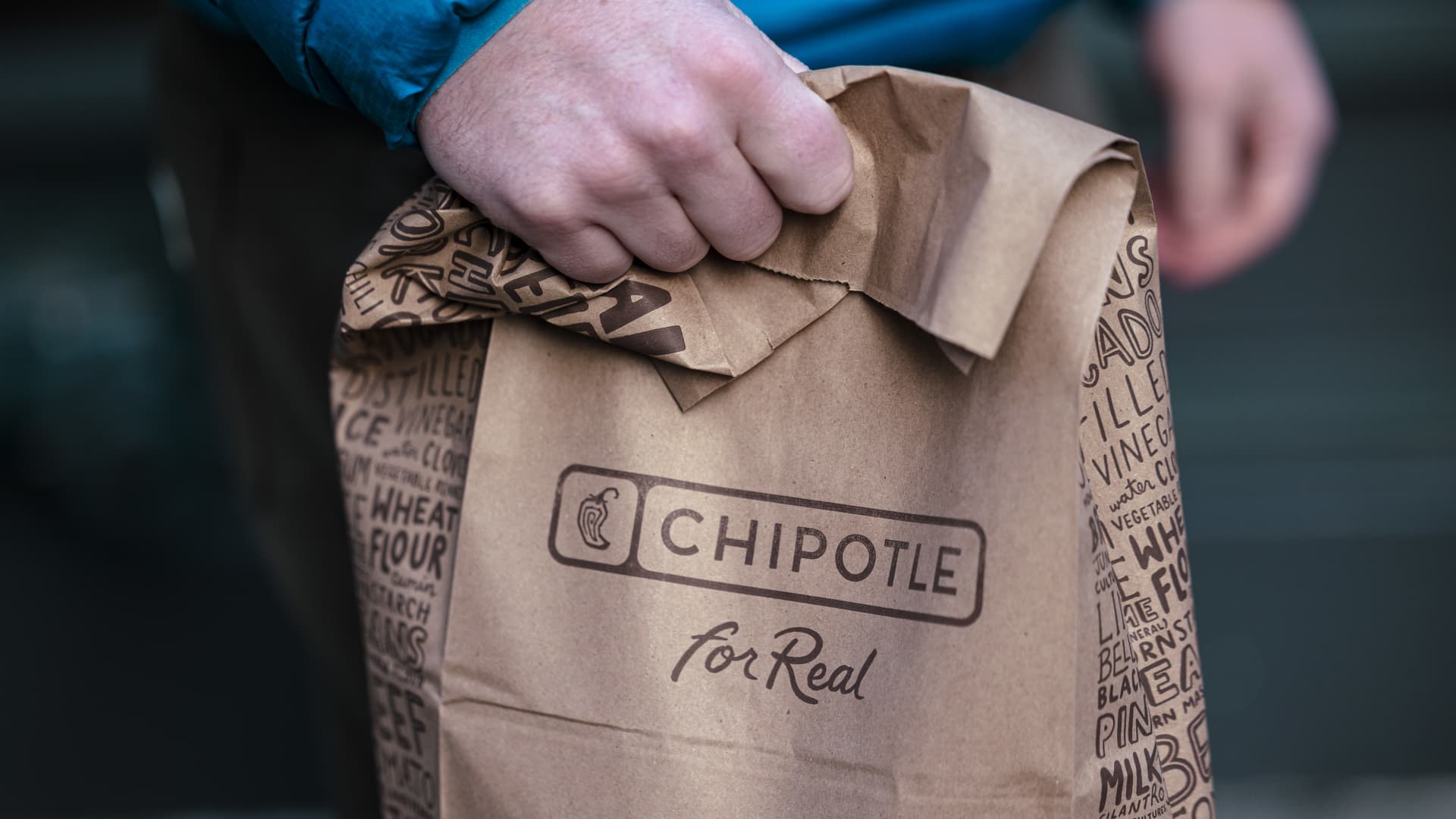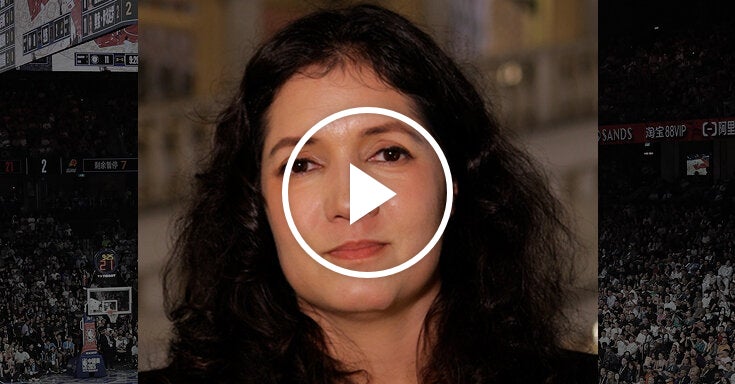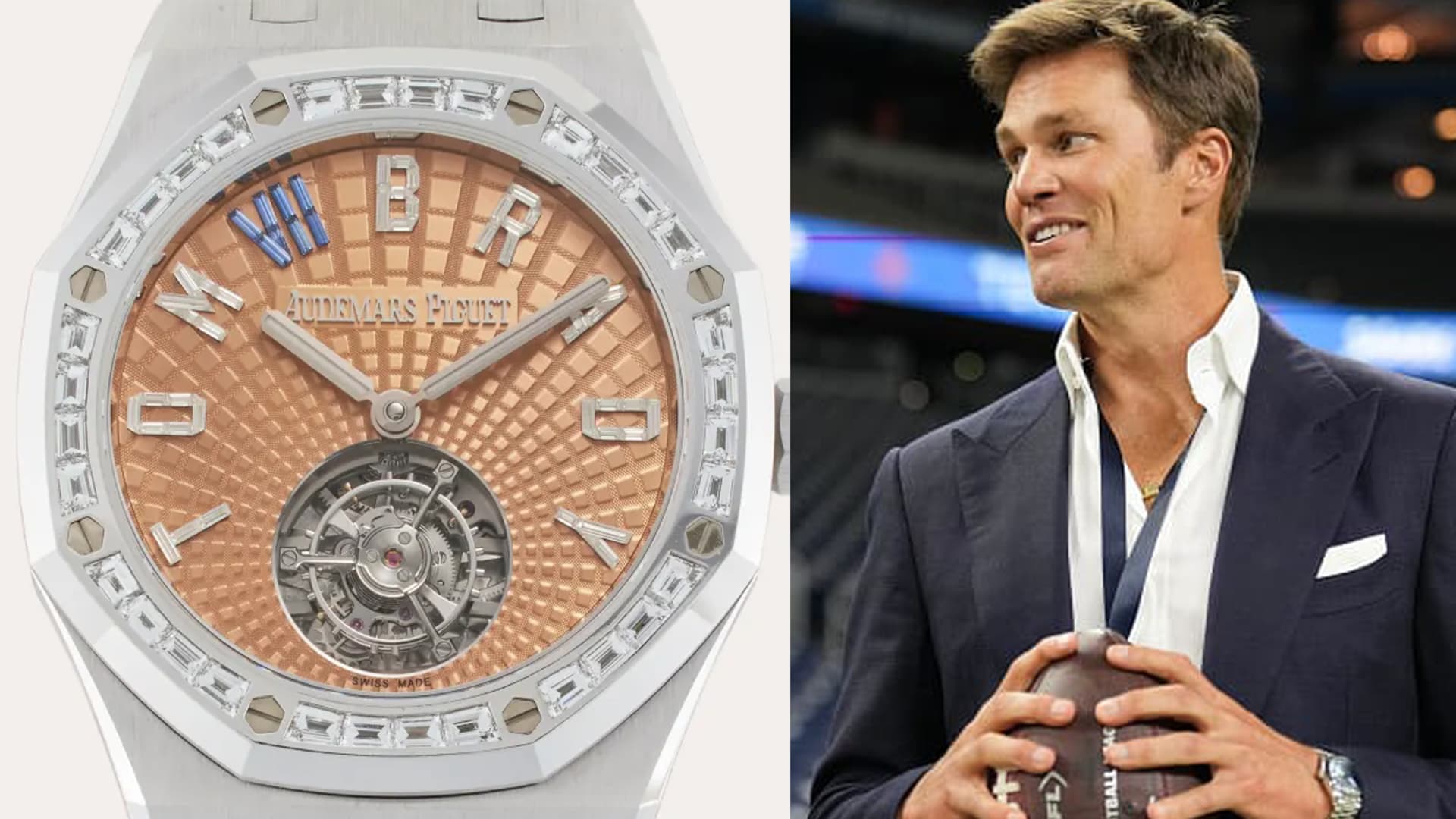Denise Buzy-Pucheu, founder and owner of the Persnickty bride, said that the pronounced tariffs on China imports are hurting US businesses, including nuptial stores and wedding dresses designers. Some of the brands they have added a tariff surcharge.
Courtesy of the Persnickety bride; Photograph by Stella Blue Photography
Days after President Donald Trump announced pronounced tariffs on the imports of China, Denise Buze-Pucheu sat on the couch on his bridal boutique and shot the store's iPhone.
In a video later posted on Instagram, the founder of the Persnickety bride in Newtown, Connecticut, spoke directly with girlfriends and possible clients and described how 145% of Chinese imports would throw the bridal business, in particular.
Almost all wedding dresses are manufactured in China or other parts of Asia, and there are also many of the fabrics, buttons, zippers and other materials they wear. Qualified seamstresses are difficult to find and, often, come from larger generations in the US. And manufacturing in other countries, where labor generally costs less, has put the prices of high quality wedding dresses within reach of many American families.
“This type of work is not just something you can collect and bring to the United States,” he said in the video. “We just don't have those technicians here to do that.”
Tariffs on Chinese imports have reached a wide range of consumer goods, including t -shirts, patio furniture, strollers and toys. However, the clothing business and wedding mouth clothes illustrates that damage tasks can cause small businesses rooted in the global supply chain.
Most of their sales come from independent stores throughout the country that carry wedding dresses, tuxedo, party dresses and more. Catan to customers with firm deadlines, tight budgets and high expectations, often making custom orders in weeks or months before an article is made or sent.
In addition to these dynamics, the industry is particularly vulnerable to rates. It is estimated that 90% of wedding dresses are made in China, according to the National Association of Bridal Retail, although an increasing number of brands has transferred manufacturing to other parts of Asia, such as Myanmar and Vietnam. The industry group represents approximately 6,000 wedding stores and special occasions in the United States.
David's girlfriend has accelerated her production from China due to tariffs. For July, its goal is to produce all its dresses in other countries, including Myanmar, Sri Lanka and Vietnam.
David's Bridal
The particular pain that the industry will feel has carried it, like others highly exposed to tariffs, to boost the perhaps of tasks. In the last two weeks, NBRA has launched a campaign to write letters to US senators and representatives to urge legislators and the White House to allow an exemption. The industry already pays a rate that began during the first Trump administration, along with a separate duty.
A White House spokesman did not immediately respond to a request for comments on whether Trump would consider an exemption.
Some big names in Bridal Gowns began an online petition, including Stephen Lang, the founder and CEO of the Mon Cheri brand, based in Trenton, NJ.
Lang said he has lost his sleep in rates. He worries that he puts the company of 120 employees that began in 1991, and many of the stores that carry their dresses, out of the business.
Many of those stores were already struggling to cover expenses such as the rent and salary of the employees, he said. And the Boutiques business models have felt tight since some customers use them as “trial stores”, only to buy a similar and cheaper alternative online.
If the stores and clothing brands close their doors forever, not only companies said, but they will also miss the ritual of finding garments for special occasions and family milestones.
“Our industry will be annihilated if it does not change,” he said.
If tariffs continue at the same level, mom and pop stores such as Sandra González's property will have to make difficult decisions. González, Nbra vice president, said the dresses he has in his Sacramento store, California, has cost him between 5% and 25% more due to tariffs.
He has cling to increasing prices, but said he is not sure how long he can wait.
“It's week by week,” González said.
Thickeons for girlfriends
For many brides, wedding dresses already cause a shock of stickers.
A girlfriend in the United States spent an average of $ 2,100 on a wedding dress, according to the 2025 real wedding studio by The Knot, a global company that sells wedding -related services and has a Wedding Suppliers directory.
And that is not the only expense on the list. In total, the average wedding expense totaled $ 31,428, according to the wedding report, a market research company for the industry. Some estimates work even more: the knot puts the average cost at $ 33,000, while David's girlfriend estimates that it is an average of $ 37,500.
Crunch Financial Crunch's girlfriends have already made it more urgent for wedding stores and designers to find ways to manage the highest costs of tariffs without losing their buyers to cheap online alternatives.
Buyers leave David's Bridal Shop near Harrisburg. David's Bridal LLC announced on Monday, April 17, 2023.
Paul Weaver | LIGHTROCKET | Getty images
David's Bridal, who has almost 200 stores throughout the country, has accelerated efforts to get all its manufacture from China. The Wedding Company based in Pennsylvania, which has gone through bankruptcy twice and is in the middle of an effort to modernize its business, sells wedding dresses that vary from $ 99 to approximately $ 6,000.
At the end of last year, approximately 48% of the company's merchandise was held in China. At the end of this year, the company aims to have almost all its production outside of China and in other countries, including Myanmar, Vietnam and Sri Lanka, said Kelly Cook CEO. Imports from these countries face a much lower rate than China, at least for now, after Trump announced a 90 -day pause on higher rates for some countries in early April.
Cook said the company also worked to obtain 300,000 dresses to the USA. Before tariffs began and has sought ways to reduce costs throughout the business, such as using new artificial intelligence tools, so it does not need to increase prices.
“Our last resort, absolutely the last resort, is to pass an increase to the client due to a rate,” he said.
Surcharges and slow production
As cost increases face, the main nuptial brands have begun to add tariff surcharges, an additional percentage -based cost that is generally shared by boutiques and nuptial customers.
Mon Cheri, for example, has added a tariff surcharge of 39% for stores. He has also taken other measures to manage costs, including the reduction of his production approximately halfway since the tariffs began, Lang said. They are only shipping orders you need, such as custom dresses for specific wedding dates.
The company imports approximately 90% of all goods and approximately 80% of China's nuptial articles. Sale wedding dresses ranging from $ 500 to $ 20,000 that are transported by specialized stores throughout the country.
For brides, the new surcharge for stores translates into an increase in retail prices of approximately 15%, Lang said. For example, the average price of the company's wedding dresses is $ 2,200, so it would add $ 300 to the price paid by a customer.
Another Bridal brand based in New Jersey, Justin Alexander, has also added tariff surcharges to his dresses, said Justin Warshaw, its creative director and CEO. For the brides, he said, those surcharges have resulted in an increase in retail prices of approximately 6%. For example, he said, a $ 2,000 dress will now cost a customer $ 120 more.
However, he said that the company decided to absorb the cost difference for the dresses that the brides ordered before the rates began, a decision that could eliminate their profits.
“We understand that a bride said yes to the dress at a price,” he said.
Approximately half of the company's production is in China, followed by 45% in Vietnam and 5% in Myanmar, Warshaw said. Their dresses vary at approximately $ 1,500 to $ 12,000.
But some designers, wedding dresses and companies said their plans can change if the fee levels fall. David's girlfriend, for example, said he can keep up to 25% of production in China if the duties decrease. Some boutiques tell the brides or include in the contracts that remain the part of the tariff surcharges included in the price if the changes of the policy and the import costs decrease, González de Nbra said.
The Bridal Dress brand, based in Atlanta, Anne Barge, is finishing its business in China and leaving the country completely, said company director Steven Jacobs.
If the company had stayed in China with the highest tariff level, its retail prices would have triggered, he said. For example, Anne Barge's Norfolk dress, which currently costs $ 3,730, would have jumped almost 65% to $ 6,150.
Jacobs and his wife, the creative director and CEO Shawne Jacobs, bought the high -end branded brand in 2014. At that time, all the company's dresses were made in China, which for a long time has had the specialized workforce to produce wedding dresses.
However, the husband and wife's team has seen first -hand complexities, and cost challenges, manufacturing in the United States, one of the declared objectives of the Trump administration of tariffs.
Partially motivated by the suppliers of the supply chain related to COVID, Shawne and Steven Jacobs opened a manufacturing installation for their bay luxury line near the company's headquarters in Atlanta. The wedding dresses line ranges between $ 4,000 and $ 14,000.
“It worked due to our prices,” said Shawne Jacobs. “But we are talking about luxury products.”
It has taken about two years climbing to an installation of 35 people and recruiting manufacturers of patterns, seamstresses and other workers necessary to make detailed dresses, said Shawne Jacobs. Many of the company's business sewers are immigrants, he said, a puddle of talent now threatened by Trump's strict immigration policies.
And she said that Asia is still crucial for production: the entire wedding line of lower price of Anne Barge, Blue Willow, is made in Vietnam. He said that making those dresses and maintaining their prices less than $ 3,000 in the United States would not be possible.

